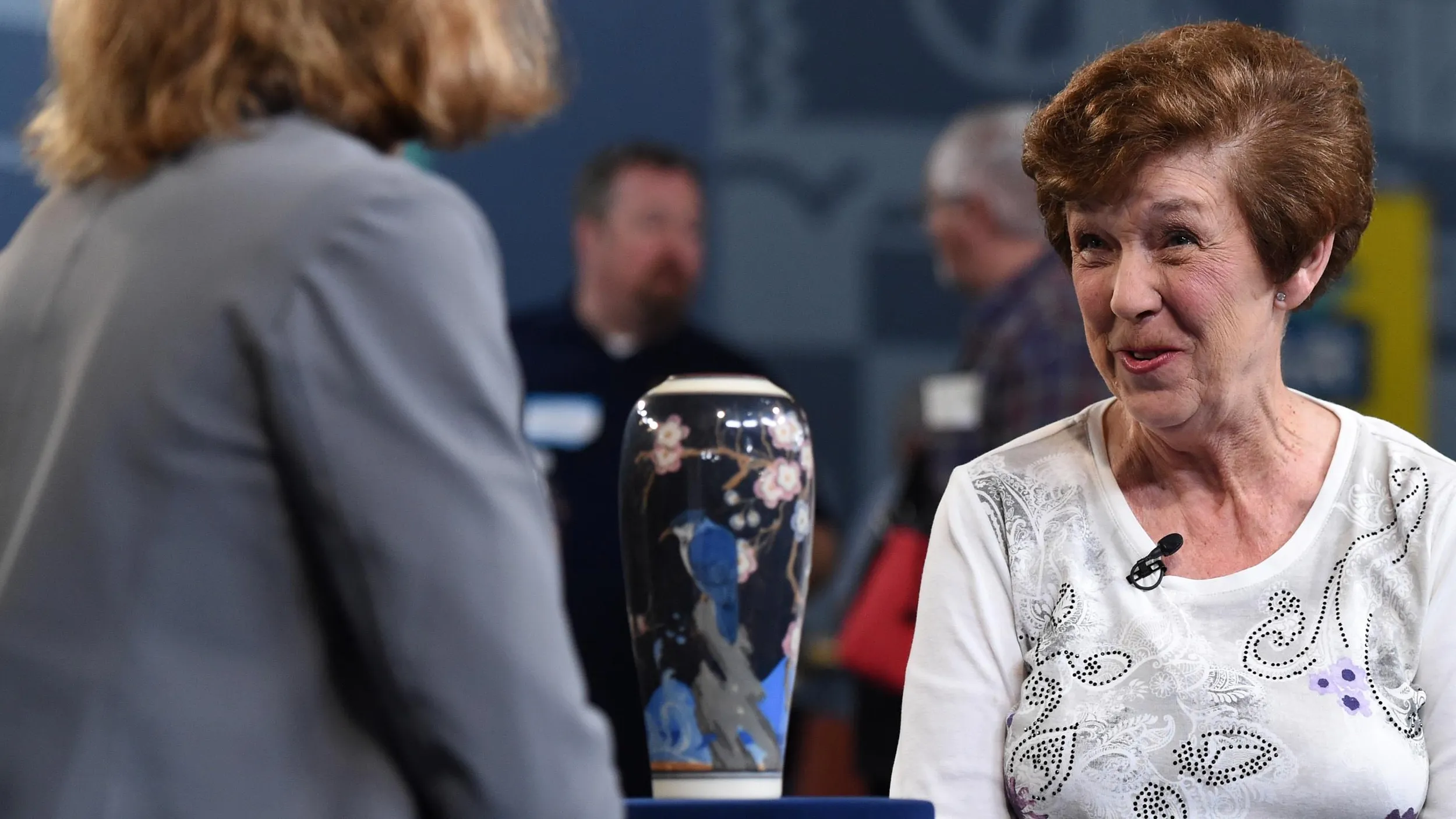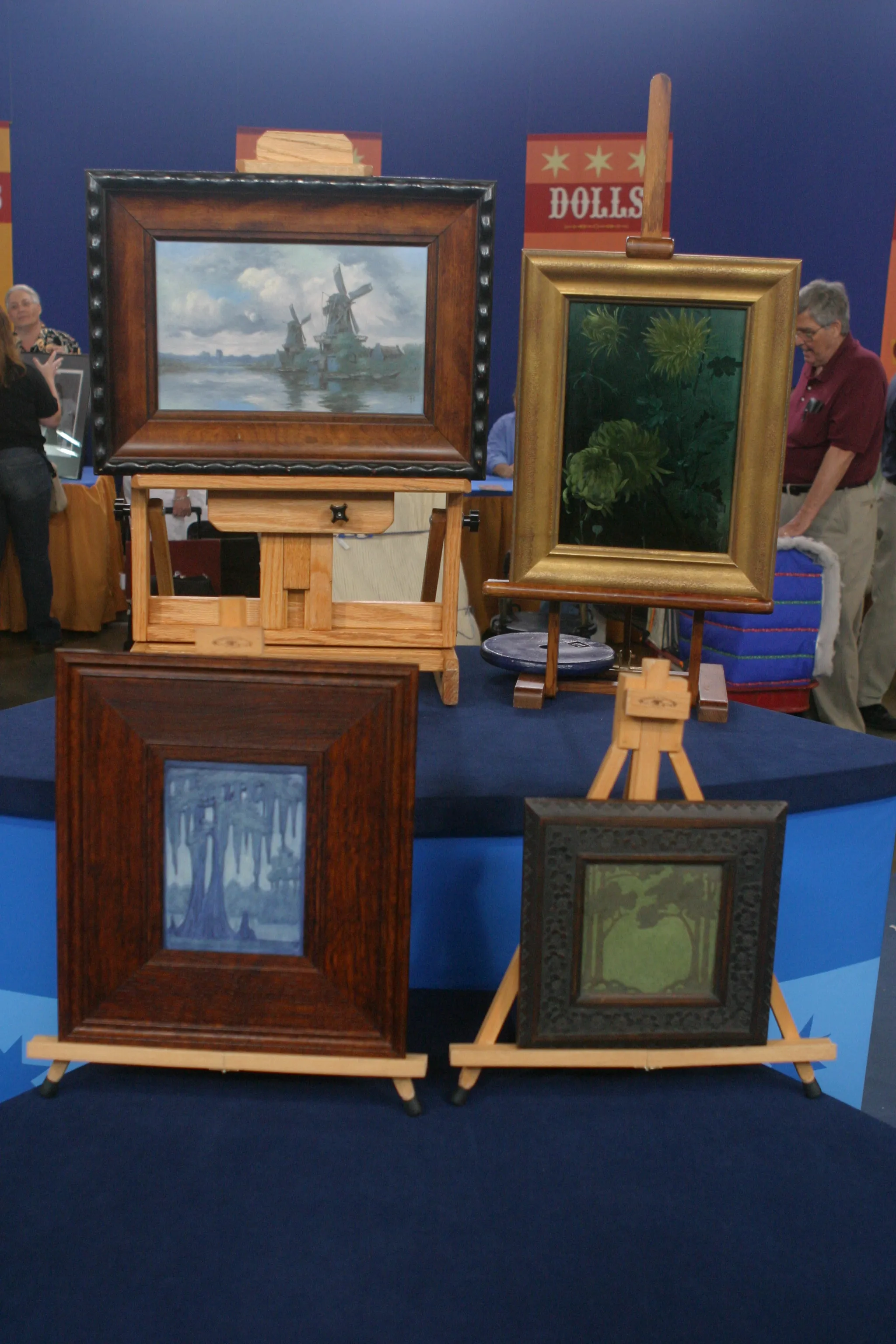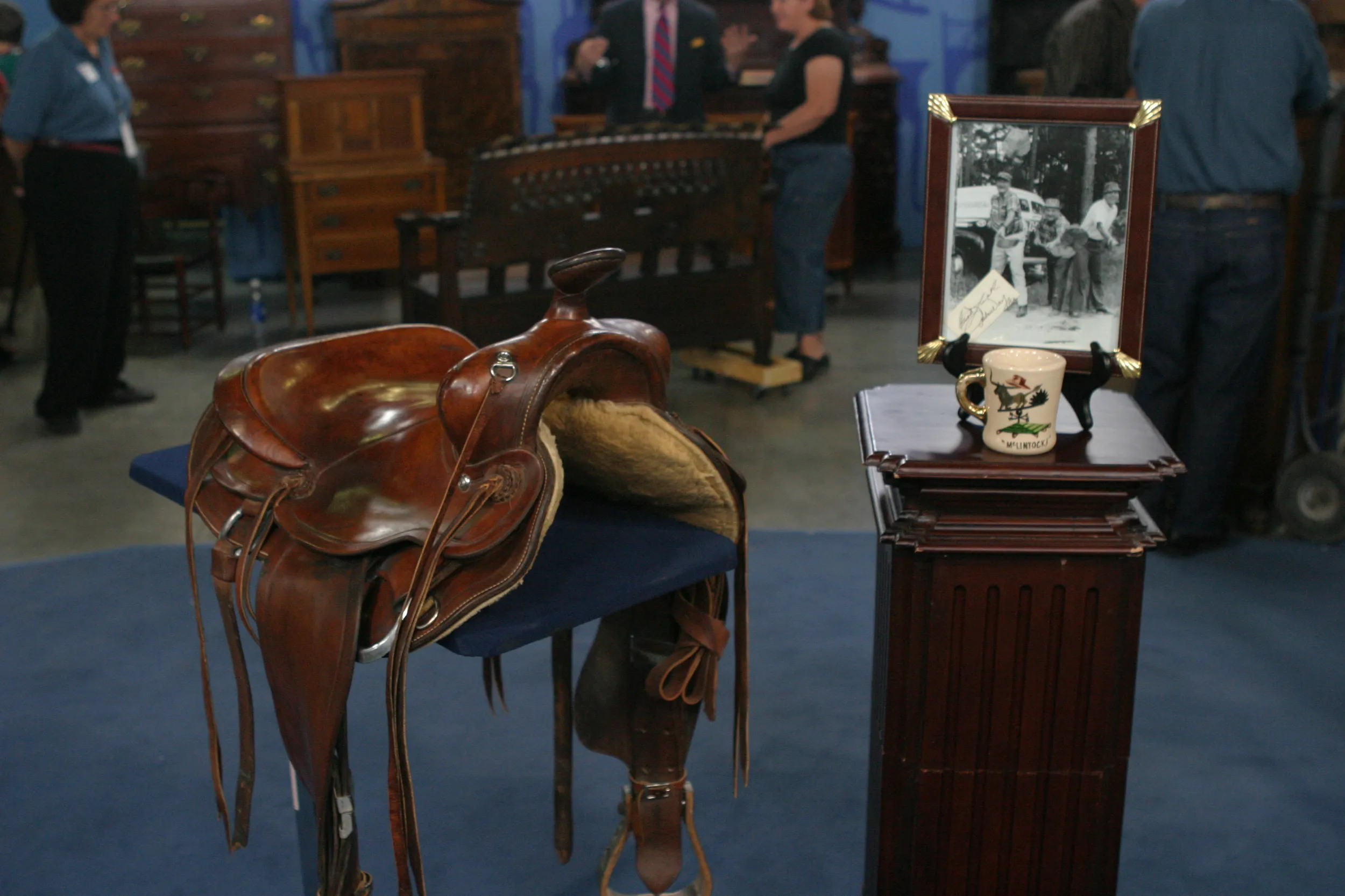APPRAISER: So when you brought this painting in today, had you any idea who the artist was?
GUEST: Not really. At first I thought it said J.H. User, and then I looked again and it was J. Hauser, but I knew nothing about who J. Hauser was.
APPRAISER: May I ask how this came into your possession?
GUEST: Ah… I inherited it from my in-laws. My mother-in-law always had it hanging in her house.
APPRAISER: Have you any idea where they might have got it?
GUEST: No, I have no idea where they got it. I know they do like to go to auctions sometimes, so maybe they got it there.
APPRAISER: John Hauser, you're absolutely correct…
GUEST: Mm-hmm.
APPRAISER: …is the artist. Who was a Cincinnati artist in fact.
GUEST: Oh!
APPRAISER: His parents were German immigrants, and he actually went to Germany to study art in Munich, which was a city where many American artists went.
GUEST: Uh-huh.
APPRAISER: And he went with his fellow Cincinnati artist Joseph Henry Sharp, who had also become a very renowned Western artist.
GUEST: Uh-huh.
APPRAISER: But really the big year for Hauser was 1891, and that was the time of his first visit to Arizona and also to New Mexico.
GUEST: Okay.
APPRAISER: And that began his long love affair with all things of a Native American and Indian origin. And he went on to become a well known painter of that culture. In the early part of the 20th century, he was so obsessed or so consumed with it…
GUEST: Uh-huh.
APPRAISER: …he and his wife lived in a tent on the Sioux reservation.
GUEST: Wow.
APPRAISER: The Plain Ridge reservation.
GUEST: Uh-huh.
APPRAISER: They spent six months a year between 1901 to 1905.
GUEST: Mm-hmm.
APPRAISER: And such was his devotion to the culture that they were rewarded by being made honorary members of the Lakota Sioux tribe.
GUEST: Wow.
APPRAISER: To the extent that they were even given Indian names. And, in fact, his name was Straight White Shield.
GUEST: Okay.
APPRAISER: And his wife's name, rather intriguingly, was Bring Us Sweets.
GUEST: (chuckles)
APPRAISER: So I'm assuming that she may have had a bit of a sweet tooth.
GUEST: Yeah.
APPRAISER: And Hauser was well known for doing many portraits of Native American Indian chiefs of various tribes, including Sitting Bull. This painting of Joe Black Fox, who's a member of the Sioux tribe. The headdress that he's wearing tells us that he was renowned for his warrior exploits. The other thing that appeals to me very much about the painting is the color. It's a very attractive painting. And of course it's – it’s an oil painting on board, which is fairly typical for the artist. It's a little hard to pin down the exact date of execution, but certainly I would imagine somewhere about 1900. We would need to do a little more research into it. His works in very much, you know, it's in good demand, as is a lot of Western art, and this is a nice subject—
GUEST: Mm-hmm.
APPRAISER: --for the various reasons that I've outlined. And I think at auction I'd feel very comfortable with a $7,000 to $10,000 estimate on it.
GUEST: Oh wow, wow. That's nice to know.
APPRAISER: Yeah.
GUEST: Thank you.








